- Home
- Orson Scott Card
Masterpieces
Masterpieces Read online
Contents
INTRODUCTION
The Golden Age
POUL ANDERSONCall Me Joe
ROBERT A. HEINLEIN“All You Zombies—”
LLOYD BIGGLE, JR.Tunesmith
THEODORE STURGEONA Saucer of Loneliness
ISAAC ASIMOVRobot Dreams
EDMOND HAMILTONDevolution
ARTHUR C. CLARKEThe Nine Billion Names of God
JAMES BLISHA Work of Art
RAY BRADBURYDark They Were, and Golden-Eyed
The New Wave
HARLAN ELLISON“Repent, Harlequin!” Said the Ticktockman
R. A. LAFFERTYEurema’s Dam
ROBERT SILVERBERGPassengers
FREDERIK POHLThe Tunnel under the World
BRIAN W. ALDISSWho Can Replace a Man?
URSULA K. LE GUINThe Ones Who Walk Away from Omelas
LARRY NIVENInconstant Moon
The Media Generation
GEORGE R. R. MARTINSandkings
HARRY TURTLEDOVEThe Road Not Taken
WILLIAM GIBSON AND MICHAEL SWANWICKDogfight
KAREN JOY FOWLERFace Value
C. J. CHERRYHPots
JOHN CROWLEYSnow
JAMES PATRICK KELLYRat
TERRY BISSONBears Discover Fire
JOHN KESSELA Clean Escape
LISA GOLDSTEINTourists
GEORGE ALEC EFFINGEROne
This is a work of fiction. Names, characters, places, and incidents are either the product of the author’s imagination or are used fictitiously, and any resemblance to actual persons, living or dead, business establishments, events or locales is entirely coincidental.
Masterpieces
An Ace Book / published by arrangement with the author
All rights reserved.
Copyright © 2001 by Orson Scott Card and Tekno Books
This book may not be reproduced in whole or part, by mimeograph or any other means, without permission. Making or distributing electronic copies of this book constitutes copyright infringement and could subject the infringer to criminal and civil liability.
For information address:
The Berkley Publishing Group, a division of Penguin Putnam Inc.,
375 Hudson Street, New York, New York 10014.
The Penguin Putnam Inc. World Wide Web site address is
http://www.penguinputnam.com
ISBN: 978-1-1012-0818-2
An ACE BOOK®
Ace Books first published by The Ace Publishing Group, a member of Penguin Putnam Inc.,
375 Hudson Street, New York, New York 10014.
ACE and the “A” design are trademarks belonging to Penguin Putnam Inc.
Electronic edition: March, 2004
Copyrights for Masterpieces: The Best Science Fiction of the Century
“Call Me Joe” by Poul Anderson. Copyright © 1957, renewed 1985 by Poul Anderson. First published in Astounding Science Fiction, April 1957. Reprinted by permission of the author and his agents, Chichak, Inc.
“ ‘All You Zombies—’ ” by Robert A. Heinlein. Copyright © 1959 by Mercury Press, Inc., renewed by the Estate of Robert A. Heinlein. First published in The Magazine of Fantasy and Science Fiction, March 1959. Reprinted by permission of the agent for the author’s Estate, Spectrum Literary Agency.
“Tunesmith” by Lloyd Biggle, Jr. Copyright © 1957 by the Quinn Publishing Co. First published in If, Worlds of Science Fiction, August 1957. Reprinted by permission of the author and his agents, Owlswick Literary Agency.
“A Saucer of Loneliness” by Theodore Sturgeon. Copyright © 1953 by the Galaxy Publishing Corp. First published in Galaxy, February 1953. Reprinted by permission of the author and his agents, Ralph M. Vicinanza, Ltd.
“Robot Dreams” by Isaac Asimov. Copyright © 1986 by Isaac Asimov. First published in Robot Dreams. Reprinted by permission of the agent for the author’s Estate, Ralph M. Vicinanza, Ltd.
“Devolution” by Edmond Hamilton. Copyright © 1936 by Ziff-Davis Publications, Inc. First published in Amazing Science Fiction, December 1936. Reprinted by permission of the agent for the author’s Estate, Spectrum Literary Agency.
“The Nine Billion Names of God” by Arthur C. Clarke. Copyright © 1953, renewed 1981 by Arthur C. Clarke. First published in Star Science Fiction #1. Reprinted by permission of the author and his agents, Scovil-Chichak-Galen Literary Agency, Inc.
“A Work of Art” by James Blish. Copyright © 1956 by Columbia Publications, renewed 1983 by the Estate of James Blish. First published in Science Fiction Stories, July 1956. Reprinted by permission of the agent for the author’s Estate, Judith Ann Lawrence Blish.
“Dark They Were, and Golden-Eyed” by Ray Bradbury. Copyright © 1949, renewed 1976 by Ray Bradbury. First published in Thrilling Wonder Stories, August 1949. Reprinted by permission of Don Congdon Associates, Inc.
“ ‘Repent, Harlequin!’ Said the Ticktockman” by Harlan Ellison. Copyright © 1965 by Harlan Ellison. Renewed, copyright © 1993 by Harlan Ellison. Reprinted by arrangement with, and permission of, the Author and the Author’s agent, Richard Curtis Associates, Inc., New York, USA. All rights reserved.
“Eurema’s Dam” by R. A. Lafferty. Copyright © 1972, 2000 by R. A. Lafferty. First published in New Dimensions II. Reprinted by permission of the author and his agents, the Virginia Kidd Agency, Inc.
“Passengers” by Robert Silverberg. Copyright © 1968 by Agberg, Ltd. First published in Orbit #4. Reprinted by permission of Agberg, Ltd.
“The Tunnel under the World” by Frederik Pohl. Copyright © 1955 by Galaxy Publishing Corporation; renewed © 1983 by Frederik Pohl. First published in Galaxy, January 1955. Reprinted by permission of the author.
“Who Can Replace a Man?” by Brian W. Aldiss. Copyright © 1958 by Brian W. Aldiss. First published in Infinity Science Fiction, June 1958. Reprinted by permission of the author.
“The Ones Who Walk Away from Omelas” by Ursula K. Le Guin. Copyright © 1973, 2001 by Ursula K. Le Guin. First published in New Dimensions 3. Reprinted by permission of the author and her agents, the Virginia Kidd Agency, Inc.
“Inconstant Moon” by Larry Niven. Copyright © 1971, 1999 by Larry Niven. First published in All the Myriad Ways. Reprinted by permission of the author and his agent, Spectrum Literary Agency.
“Sandkings” by George R. R. Martin. Copyright © 1979 by Omni International, Ltd. First published in Omni, August 1979. Reprinted by permission of the author.
“The Road Not Taken” by Harry Turtledove. Copyright © 1985 by Harry Turtledove. First published in Analog, February 1985. Reprinted by permission of the author.
“Dogfight” by William Gibson and Michael Swanwick. Copyright © 1985 by Omni Publications International Ltd. First published in Omni, July 1985. Reprinted by permission of the authors and their agent, the Martha Millard Literary Agency.
“Face Value” by Karen Joy Fowler. Copyright © 1986 by Mercury Press, Inc. First published in The Magazine of Fantasy and Science Fiction. Reprinted by permission of the author.
“Pots” by C. J. Cherryh. Copyright © 1985 by C. J. Cherryh. First published in Afterwar. Reprinted by permission of the author.
“Snow” by John Crowley. Copyright © 1985 by Omni Publications International Ltd. First published in Omni, November 1985. Reprinted by permission of the author.
“Rat” by James Patrick Kelly. Copyright © 1986 by Mercury Press, Inc. First published in The Magazine of Fantasy and Science Fiction. Reprinted by permission of the author.
“Bears Discover Fire” by Terry Bisson. Copyright © 1990 by Davis Publications. First published in Isaac Asimov’s Science Fiction Magazine, August 1990. Reprinted by permission of the author and the author’s agent, Susan Ann Protter.
“A Clean Escape” by John Kessel. Copy
right © 1985 by Davis Publications, Inc. First published in Isaac Asimov’s Science Fiction Magazine, May 1985. Reprinted by permission of the author.
“Tourists” by Lisa Goldstein. Copyright © 1985 by Davis Publications, Inc. First published in Isaac Asimov’s Science Fiction Magazine, February 1985. Reprinted by permission of the author.
“One” by George Alec Effinger. Copyright © 1995 by George Alec Effinger. First published in New Legends. Reprinted by permission of the author.
INTRODUCTION
MAKING A LIST of the best science fiction stories of the century is the same as making a list of the best science fiction stories of the millennium. Or, for that matter, the best ever, up to now, because the entire history of science fiction as a self-conscious literary community begins well into the 1900s, when Hugo Gernsback published the first magazine devoted to “scientifiction,” defined as “scientific romances like those written by H. G. Wells.”
H. G. Wells, Jules Verne, and a whole slew of adventure writers (including A. Merritt, H. Rider Haggard, and others who went on to be full-fledged sci-fi writers, like Edmond Hamilton) wrote stories that, in hindsight, clearly belong as part of the science fiction tradition. But they did not think of their stories as being a new kind of literature. Nor did they see themselves as belonging to a different literary community when they wrote stories that included alien races, strange new inventions, or astonishing relics of the past.
With the publication of Gernsback’s Amazing Stories, however, the landscape changed. There were now boundaries—which would eventually, for a while at least, become ghetto walls, much to the benefit of the genre—such that only stories of a certain kind could appear within, thus defining what science fiction was and, by implication, what it was not. And there was a letters column.
It was the letters column, really, that created the community. Enthusiasts of the new genre wrote in to Gernsback and then avidly read each other’s published letters. Then, skipping the middleman, they wrote directly to each other, and after a while began to meet and talk about what science fiction was and what it could be or should be. They started writing their own stories and sharing them with each other, and eventually began meeting as clubs and, later, in conventions that assembled serious readers of the genre from faraway places, until today the World Science Fiction convention draws participants from dozens of countries and languages (though English remains the lingua franca—or, if you prefer, the common koine—of the genre).
As readers became “fans”—participants in the ongoing public conversation of the sci-fi community—and fans became writers, they began to develop critical principles quite unconnected to the literary ideas being taught in the American university, where theories of criticism came and went, alike only in the fact that all were designed to show why the works of the Modernists (the most recent literary revolution before science fiction) were Great Art. Naturally, the academics, who were relentlessly focused on celebrating Woolf, Lawrence, Joyce, Eliot, Pound, Faulkner, Hemingway, and their literary kin and kith, had no notion of what was going on within the walls of the science fiction ghetto. And when at last they had to take notice because their students kept mentioning books like Dune and Stranger in a Strange Land, the academics discovered that these strange books and magazines with ludicrously lurid covers did not pay the slightest attention to the Standards of Great Literature that they had developed. Instead of realizing that their standards were inadequate because they did not apply to science fiction, they reached the much safer and easier conclusion that science fiction must be bad.
You know the old saying: To a man with a hammer, everything looks like a nail. Well, that’s only sometimes true. In the case of the academic-literary establishment—the community I lovingly call “li-fi”—the better analogy is: To a man with only a hammer, a screw is a defective nail.
So every few years, Atlantic Monthly or Harper’s Magazine or The New Yorker will trot out an essay explaining exactly why sci-fi is Bad Art. What else would you expect the old aristocracy to do as they try to defend their ivory towers from the onslaught of the smelly and unsubservient masses?
The fact is that by the mid 1940s, science fiction was the most vibrant, most productive, most innovative, and, eventually, the most accomplished of literary communities. Entirely supported by volunteers who read for stories and ideas, rather than students required to peruse and decode texts for grades, science fiction grew and changed, constantly reinventing itself, taking into itself whatever it found useful in other genres and other disciplines—not just science, and not just fiction. Revolution upon revolution, generation upon generation, there was more variety, more history within sci-fi than there was outside it.
I came rather late to the party. The year I was born, 1951, the seminal work had already been done. John W. Campbell had moved science fiction onto a firmer scientific footing (though the old gosh-wow adventure tradition still continued), and Robert Heinlein had taught us how to handle the gradual unfolding of exposition, the key literary technique that every reader and writer of sci-fi now must master in order to take part in the conversation. When I was born, Heinlein, Asimov, and Clarke were already the trinity of leading writers in the field, with Bradbury, Anderson, and Blish soon to make their presence known. Science fiction was part of the air I breathed as I grew up.
As it continues to be for us all. Because sci-fi is mostly read by volunteers (though a few writers have found their work widely required in high schools and middle schools), older works stay in print, not because some teacher has declared them officially Great, but because people are still reading them and telling their friends that they have to get Asimov’s Foundation or Herbert’s Dune or Heinlein’s The Moon Is a Harsh Mistress or Le Guin’s The Left Hand of Darkness. We still pass this literature from hand to hand. It is still the passionate reader who drives the genre, and, as a result, the entire history of science fiction is still readily available. We can read our way from beginning to end, and have it whole in our memories.
Still, presenting the history of science fiction is not my goal in this book. This is not a tome to be studied. This is a treasury. A collection of jewels.
Not an infinite treasury, either. We had limitations—the publishers had the foolish belief that you would not pay seventy dollars for a three-thousand-page book. We could not include every story that belongs here; we could not include every writer whose work should be represented. More painfully, there are writers—Ray Bradbury, Harlan Ellison, George Alec Effinger, R. A. Lafferty—who have virtually specialized in the short story. In a collection of the best stories in the history of science fiction, it is almost unthinkable to choose only one Bradbury, only one Ellison.
And what do you do about John Varley, whose finest “short” work is so long that if you include “Press Enter_” or “The Persistence of Vision” you have to leave out five other stories? Even as it is, I had to leave out some of my very favorite writers and stories—Peter Dickinson’s “Flight,” for instance, and Felix Gottschalk’s “Vestibular Man,” David Bunch’s Moderan stories; and I’m dismayed at the list of writers not represented here—Bruce Sterling, Connie Willis, Nancy Kress, Lucius Shepherd, Lois McMaster Bujold, Norman Spinrad, Clifford Simak, Vonda McIntyre, Octavia Butler, Dave Wolverton—some of the very writers that I cite.
But that’s why I get the big bucks—I can make tough choices. Screaming, whining, whimpering, talking to myself far into the night, I made the calls.
Here’s how I chose:
These are stories that I loved when I first read them and that, upon rereading, I still love and admire. They are stories that I think appeal to a wide audience of readers and not just a small group. They are by writers who have mattered in the field, influencing other writers and, more importantly, changing the lives of their readers. I tried to avoid duplications—stories that did the same kind of thing as others in the collection, though of course such judgments are completely subjective.
Above all, these are storie
s that I cannot forget.
I have grouped them in three general categories, by era. The Golden Age—from the beginning to the midsixties—includes the writers and stories that created science fiction as we know it. And yes, I’m aware that “Robot Dreams” was one of Asimov’s later works, but he remained a Golden Age writer—perhaps the best of them—throughout his career. At the same time, Sturgeon and Blish arguably are post–Golden Age, while Hamilton and Biggle might be considered holdovers from earlier. Give me a break here. Whatever you call this period, these are the writers who plowed and planted.
The New Wave period—the midsixties to the midseventies—was marked by writers who introduced dazzling style and a fervor, sometimes a rage, that reenergized the field and opened it to many new kinds of storytelling. At the same time, the older sci-fi tradition—the plain tale, the idea-based story, the moral dilemma, the character story—continued to be enriched by such writers as Larry Niven, Ursula K. Le Guin, Frederik Pohl, and Brian Aldiss.
If the New Wave–era writers were the children of the Golden Age, either rebelling against their parents or taking over the family business, the eighties and nineties were dominated by the grandchildren of the Golden Age—the writers who grew up watching Twilight Zone, The Outer Limits, and Star Trek right along with reading “Call Me Joe,” “ ‘All You Zombies—’,” and “ ‘Repent, Harlequin!’ Said the Ticktockman.” The Media Generation found that they could write any kind of story, and while some movements took on a separate identity—the Cyberpunks, the Humanists—most of us who began writing in this era found that we could do whatever we pleased and as long as our stories fit, more or less, within the ever-loosening borders of the genre, there would be readers who were eager to hear our voices and experience the stories we had to offer.
As you move from one era to the next, you’ll get a sense of how science fiction has developed through the years—without losing touch with its roots, without forgetting anything that we, as a community, have learned.

 Shadows in Flight
Shadows in Flight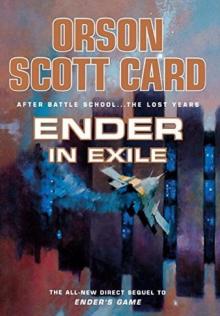 Ender in Exile
Ender in Exile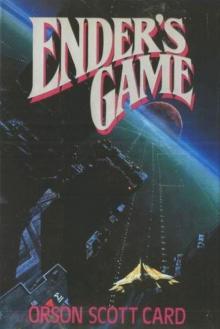 Ender's Game
Ender's Game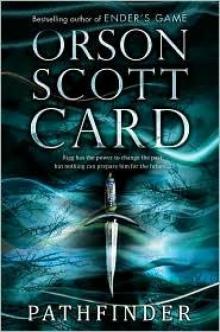 Pathfinder
Pathfinder Children of the Fleet
Children of the Fleet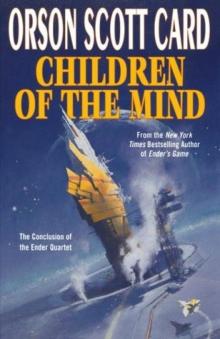 Children of the Mind
Children of the Mind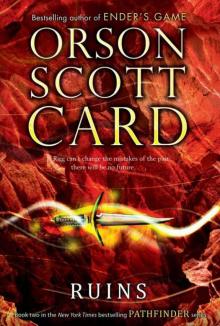 Ruins
Ruins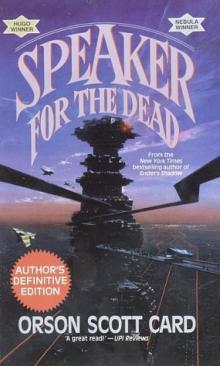 Speaker for the Dead
Speaker for the Dead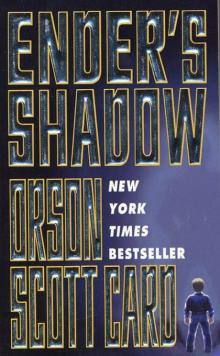 Ender's Shadow
Ender's Shadow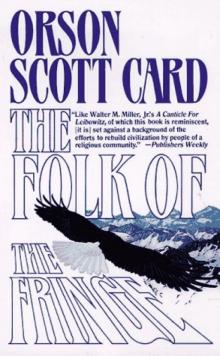 Folk of the Fringe
Folk of the Fringe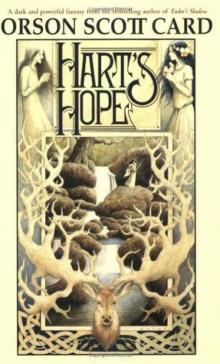 Hart's Hope
Hart's Hope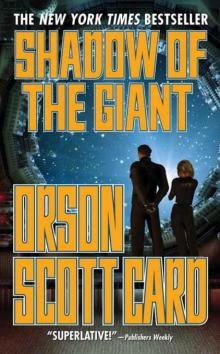 Shadow of the Giant
Shadow of the Giant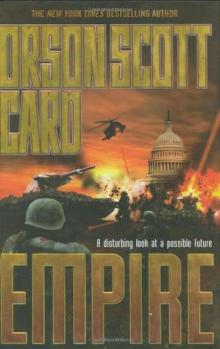 Empire
Empire Shadow Puppets
Shadow Puppets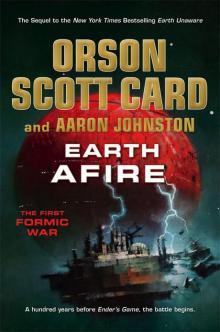 Earth Afire
Earth Afire First Meetings in Ender's Universe
First Meetings in Ender's Universe Maps in a Mirror: The Short Fiction of Orson Scott Card
Maps in a Mirror: The Short Fiction of Orson Scott Card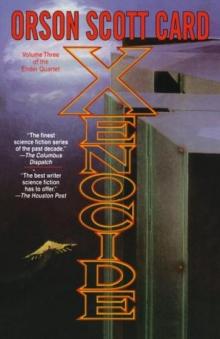 Xenocide
Xenocide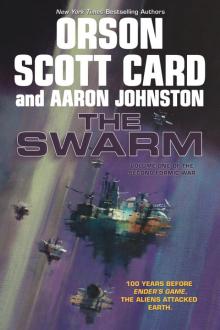 The Swarm: The Second Formic War
The Swarm: The Second Formic War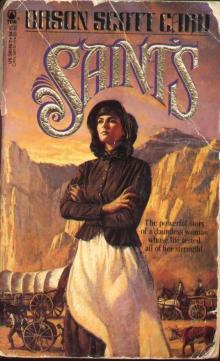 Saints
Saints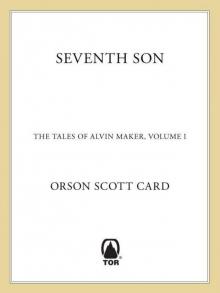 Seventh Son: The Tales of Alvin Maker, Volume I
Seventh Son: The Tales of Alvin Maker, Volume I Zanna's Gift
Zanna's Gift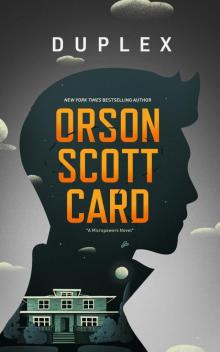 Duplex
Duplex Zanna's Gift- a Life in Christmases
Zanna's Gift- a Life in Christmases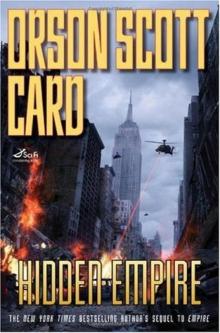 Hidden Empire
Hidden Empire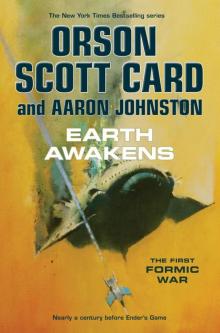 Earth Awakens
Earth Awakens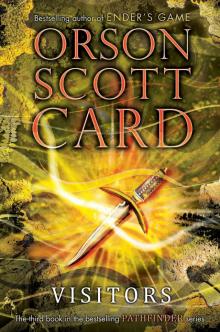 Visitors
Visitors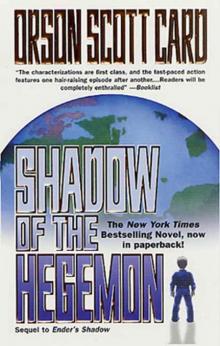 Shadow of the Hegemon
Shadow of the Hegemon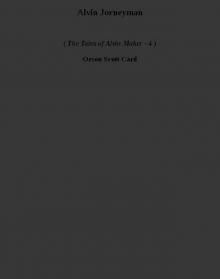 Alvin Jorneyman ttoam-4
Alvin Jorneyman ttoam-4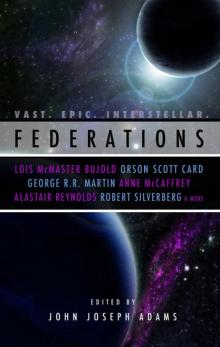 Federations
Federations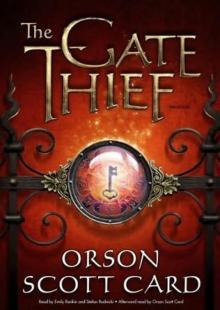 The Gate Thief mm-2
The Gate Thief mm-2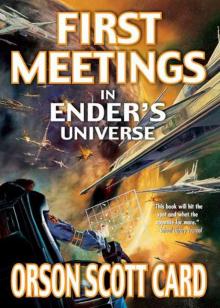 First Meetings
First Meetings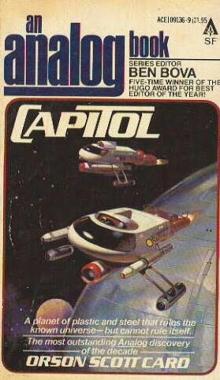 Capitol
Capitol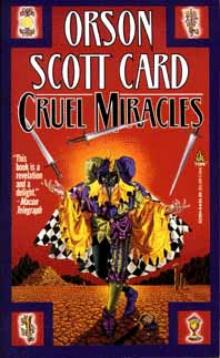 Cruel Miracles
Cruel Miracles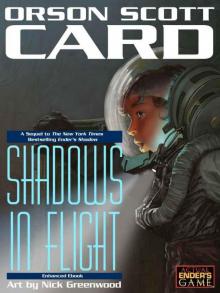 Shadows in Flight, enhanced edition
Shadows in Flight, enhanced edition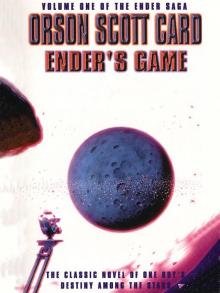 Ender's Game es-1
Ender's Game es-1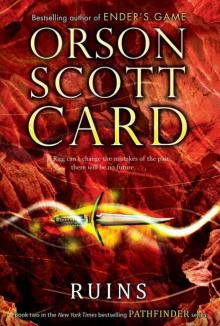 Ruins (Pathfinder Trilogy)
Ruins (Pathfinder Trilogy)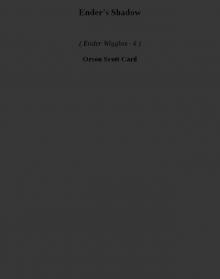 Ender's Shadow ew-6
Ender's Shadow ew-6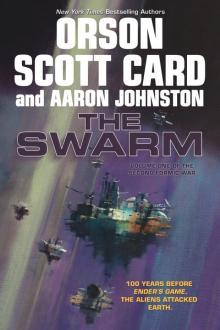 The Swarm
The Swarm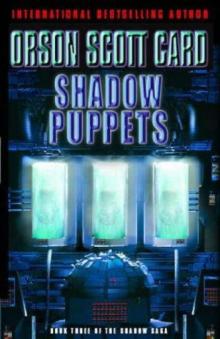 Card, Orson Scott - Ender's Saga 7 - Shadow Puppets
Card, Orson Scott - Ender's Saga 7 - Shadow Puppets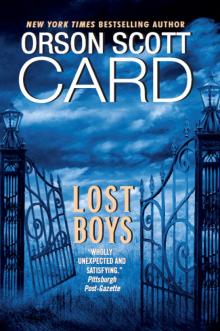 Lost Boys: A Novel
Lost Boys: A Novel Mazer in Prison
Mazer in Prison Treason
Treason Heal Thyself
Heal Thyself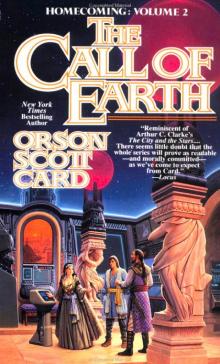 The Call of Earth
The Call of Earth Songmaster
Songmaster Heartfire ttoam-5
Heartfire ttoam-5 Pastwatch
Pastwatch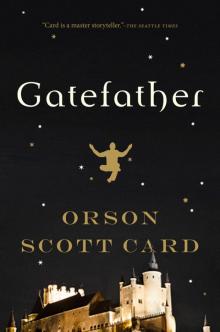 Gatefather
Gatefather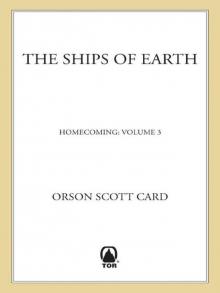 The Ships of Earth: Homecoming: Volume 3
The Ships of Earth: Homecoming: Volume 3 Orson Scott Card - Ender 08 - Shadow of the Giant
Orson Scott Card - Ender 08 - Shadow of the Giant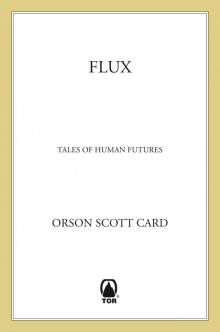 Flux
Flux Speaker for the dead ew-2
Speaker for the dead ew-2 Grinning Man
Grinning Man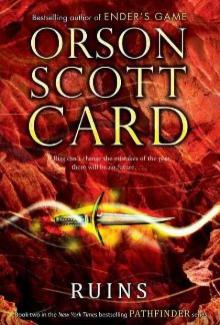 Ruins sw-2
Ruins sw-2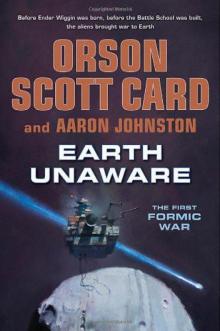 Earth Unaware
Earth Unaware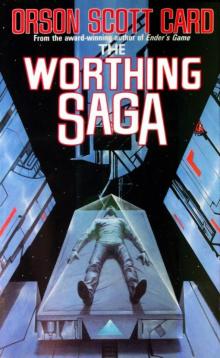 The Worthing Saga
The Worthing Saga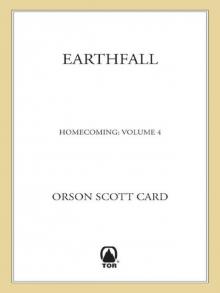 Earthfall (Homecoming)
Earthfall (Homecoming)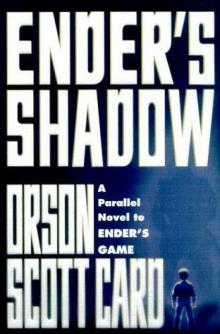 Card, Orson Scott - Ender's Saga 5 - Ender's Shadow
Card, Orson Scott - Ender's Saga 5 - Ender's Shadow The Abyss
The Abyss Magic Street
Magic Street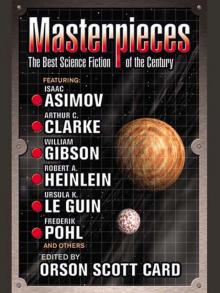 Masterpieces
Masterpieces Prentice Alvin ttoam-3
Prentice Alvin ttoam-3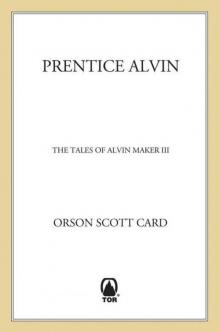 Prentice Alvin: The Tales of Alvin Maker, Volume III
Prentice Alvin: The Tales of Alvin Maker, Volume III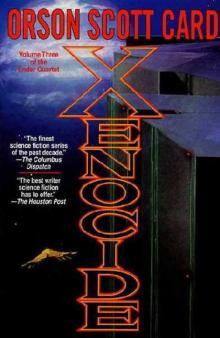 Card, Orson Scott - Ender's Saga 3 - Xenocide
Card, Orson Scott - Ender's Saga 3 - Xenocide Homeless in Hell
Homeless in Hell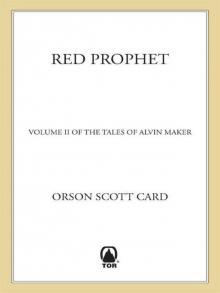 Red Prophet: The Tales of Alvin Maker, Volume II
Red Prophet: The Tales of Alvin Maker, Volume II Earthborn (Homecoming)
Earthborn (Homecoming) Hot Sleep
Hot Sleep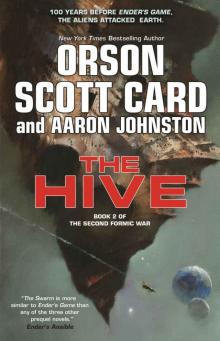 The Hive
The Hive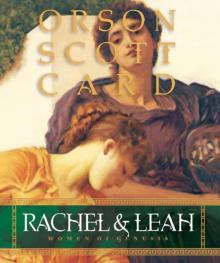 Rachel and Leah (Women of Genesis)
Rachel and Leah (Women of Genesis)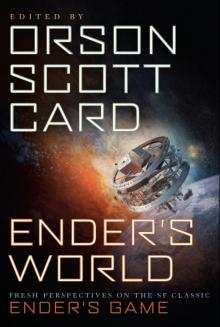 Ender's World
Ender's World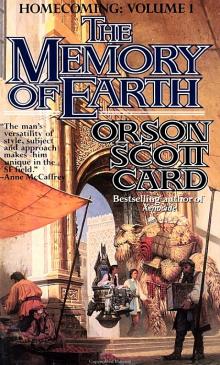 The Memory of Earth
The Memory of Earth Seventh Son ttoam-1
Seventh Son ttoam-1 Wyrms
Wyrms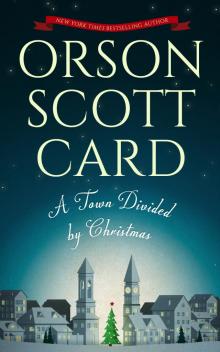 A Town Divided by Christmas
A Town Divided by Christmas Earth unavare (the first formic war)
Earth unavare (the first formic war)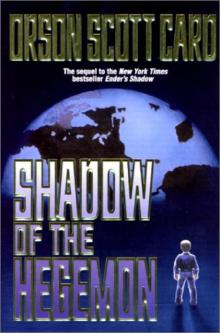 The Shadow of the Hegemon - Orson Scott Card
The Shadow of the Hegemon - Orson Scott Card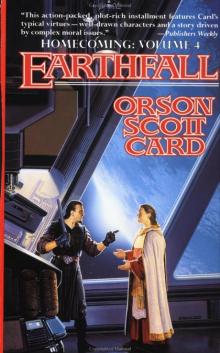 Earthfall
Earthfall Lost Boys
Lost Boys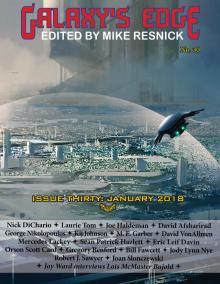 Galaxy's Edge Magazine
Galaxy's Edge Magazine Sarah: Women of Genesis: 1 (Women of Genesis (Forge))
Sarah: Women of Genesis: 1 (Women of Genesis (Forge))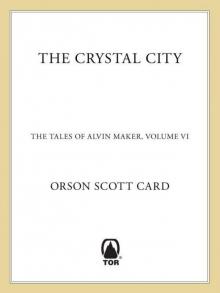 The Crystal City: The Tales of Alvin Maker, Volume VI
The Crystal City: The Tales of Alvin Maker, Volume VI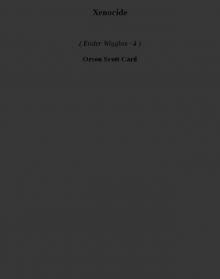 Xenocide ew-4
Xenocide ew-4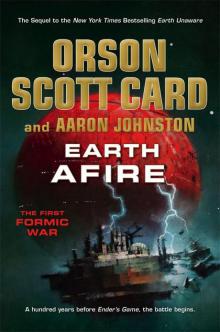 Earth Afire (The First Formic War)
Earth Afire (The First Formic War)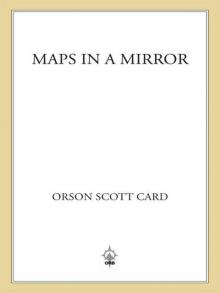 Maps in a Mirror
Maps in a Mirror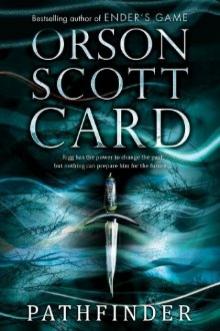 Pathfinder sw-1
Pathfinder sw-1 Red Prophet ttoam-2
Red Prophet ttoam-2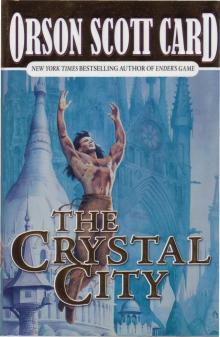 THE CRYSTAL CITY
THE CRYSTAL CITY 27 Short Stories
27 Short Stories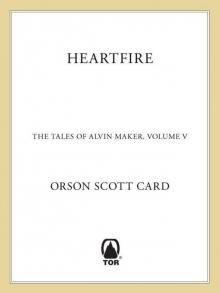 Heartfire: The Tales of Alvin Maker, Volume V
Heartfire: The Tales of Alvin Maker, Volume V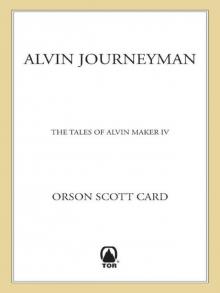 Alvin Journeyman: The Tales of Alvin Maker, Volume IV
Alvin Journeyman: The Tales of Alvin Maker, Volume IV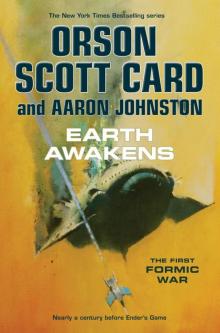 Earth Awakens (The First Formic War)
Earth Awakens (The First Formic War)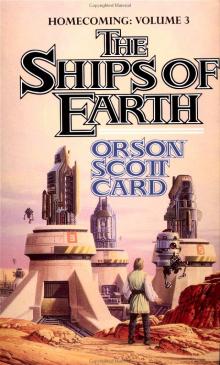 THE SHIPS OF EARTH
THE SHIPS OF EARTH The Changed Man
The Changed Man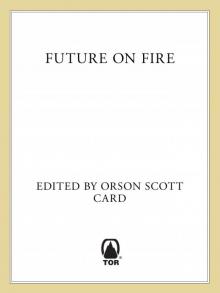 Future on Fire
Future on Fire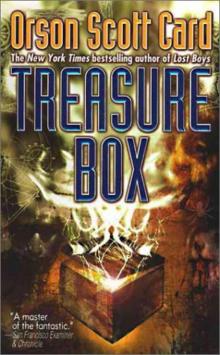 Treasure Box
Treasure Box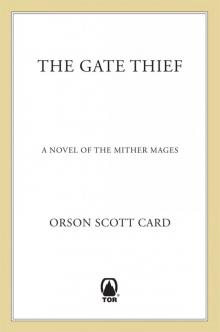 The Gate Thief
The Gate Thief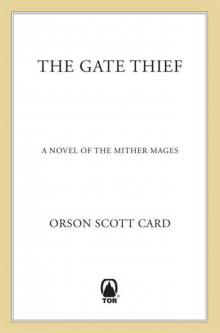 The Gate Thief (Mither Mages)
The Gate Thief (Mither Mages) First Meetings In the Enderverse
First Meetings In the Enderverse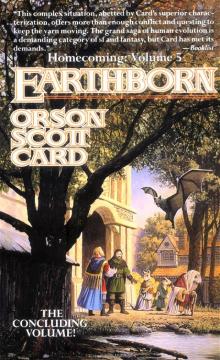 Earthborn
Earthborn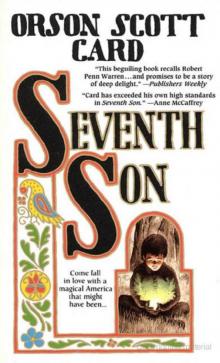 Seventh Son
Seventh Son Pastwatch: The Redemption Of Christopher Columbus
Pastwatch: The Redemption Of Christopher Columbus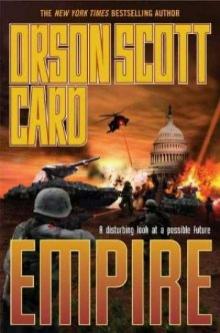 Empire e-1
Empire e-1 Keeper of Dreams
Keeper of Dreams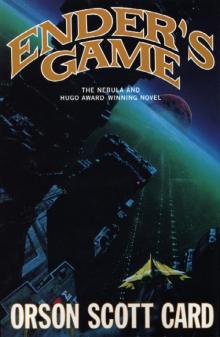 Card, Orson Scott - Ender's Saga 1 - Ender's Game
Card, Orson Scott - Ender's Saga 1 - Ender's Game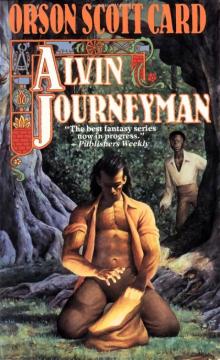 ALVIN JOURNEYMAN
ALVIN JOURNEYMAN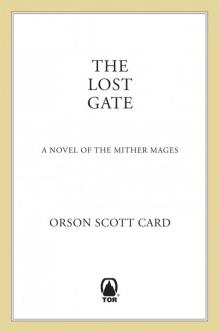 The Lost Gate
The Lost Gate Feed The Baby Of Love
Feed The Baby Of Love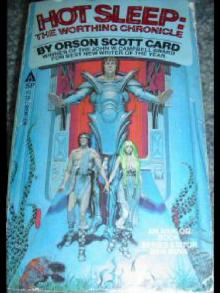 Hot Sleep: The Worthing Chronicle
Hot Sleep: The Worthing Chronicle